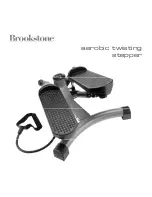
57
Causa
1.Il filo dell’ago non è infilato correttamente.
2.La tensione del filo dell’ago è eccessiva.
3.L’ago è piegato o spuntato.
4.L’ago non è inserito correttamente.
5.Il tessuto non è stato tirato verso la parte posteriore al
termine della cucitura.
6.Il filo è troppo spesso o troppo fine per l’ago.
1.Il filo della spolina non è infilato correttamente nella capsula.
2.Si sono accumulati residui di filo nella capsula della spolina.
3.La spolina è danneggiata e non ruota regolarmente.
1.L’ago non è inserito correttamente.
2.L’ago è piegato o spuntato.
3.La vite del morsetto dell’ago è allentata.
4.La tensione del filo dell’ago è eccessiva.
5.Il tessuto non è stato tirato verso la parte posteriore al
termine della cucitura.
6.L’ago è troppo sottile per il tessuto.
7.La manopola di selezione dei punti è stata ruotata mentre
l’ago era inserito nel tessuto.
1.L’ago non è inserito correttamente.
2.L’ago è piegato o spuntato.
3.L’ago e/o i fili non sono idonei per la lavorazione scelta.
4.Non si sta usando un ago con la punta sferica per cucire
tessuti elasticizzati, tessuti molto fini e sintetici.
5.Il filo dell’ago non è infilato correttamente.
1.Il filo dell’ago è troppo teso.
2.L’infilatura non è eseguita correttamente.
3.L’ago è troppo spesso per il tessuto.
4.I punti sono troppo lunghi per il tessuto.
* Durante la cucitura di tessuti molto leggeri, posizionare
un foglio di carta sotto il tessuto.
1.La tensione del filo dell’ago è insufficiente.
2.L’ago è troppo spesso o troppo sottile per il filo.
1.Il trasportatore è sporco di residui di filo.
2.I punti sono troppo corti.
1.La macchina per cucire non è collegata alla rete elettrica.
2.Il filo è rimasto intrappolato nel crochet.
1.Il filo è rimasto intrappolato nel supporto del crochet.
2.Il trasportatore è sporco di residui di filo.
Ricerca guasti e difetti
Condizione
Il filo dell’ago
si spezza.
Il filo della
spolina si
spezza.
L’ago si
spezza.
Punti saltati.
Cucitura
arricciata .
I punti formano
delle gugliate
sul rovescio.
Il tessuto non
scorre
uniformemente.
La macchina per
cucire non
funziona.
La macchina per
cucire non
funziona
regolarmente ed è
rumorosa.
Riferimento
Vedere pagina 23
Vedere pagina 27
Vedere pagina 17
Vedere pagina 17
Vedere pagina 33
Vedere pagina 17
Vedere pagina 21
Pulire la capsula della spolina.
Sostituire la spolina.
Vedere pagina 17
Vedere pagina 17
Vedere pagina 17
Vedere pagina 27
Vedere pagina 33
Vedere pagina 17
Vedere pagina 29
Vedere pagina 17
Vedere pagina 17
Vedere pagina 17
Vedere pagina 17
Vedere pagina 23
Vedere pagina 27
Vedere pagina 23
Vedere pagina 17
Impostare punti più
corti.
Vedere pagina 27
Vedere pagina 13
Vedere pagina 53
Impostare punti più
lunghi.
Vedere pagina 13
Vedere pagina 53
Vedere pagina 53
Vedere pagina 53
1. The needle thread is not threaded properly.
2. The needle thread tension is too tight.
3. The needle is bent or blunt.
4. The needle is incorrectly inserted.
5. The fabric is not being drawn to the back when sewing is finished.
6. The thread is either too heavy or too fine for the needle.
1. The bobbin thread is not threaded properly in the bobbin case.
2. Lint has collected in the bobbin case.
3. The bobbin is damaged and doesn't turn smoothly.
1. The needle is incorrectly inserted.
2. The needle is bent or blunt.
3. The needle clamp screw is loose.
4. The tension of the needle thread is too tight.
5. The fabric is not drawn to the back when sewing is finished.
6. The needle is too fine for the fabric being sewn.
7. The pattern selector dial had been turned while the needle was
in the material.
1. The needle is incorrectly inserted.
2. The needle is bent or blunt.
3. The needle and/or threads are not suitable for the work being
sewn.
4. A BLUE TIPPED needle is not being used for sewing stretch, very
fine fabrics and synthetics.
5. The needle thread is not threaded properly.
1. The needle thread tension is too tight.
2. The machine is not threaded correctly.
3. The needle is too heavy for the fabric being sewn.
4. The stitches are too coarse for the fabric being new line sewn.
* When sewing extremely light weight materials, place a sheet
of paper underneath the fabric.
1. The needle thread tension is too loose.
2. The needle is either too heavy or too fine for the thread.
1. The feed dog is packed with lint.
2. The stitches are too fine.
1. The machine is not plugged in.
2. Thread is caught in the hook race.
1. Threads have been caught in hook mechanism.
2. The feed dog is packed with lint.
The needle
thread
breaks.
The bobbin
thread
breaks.
-
The needle
breaks.
Skipped
stitches
Seam
puckering
Stitches form
loops
below the
work
The cloth is
not
feeding
smoothly.
The machine
does not
work.
The machine
does not
run smoothly
and is noisy.
Reference
Cause
See Page 23
See Page 27
See Page 17
See Page 17
See Page 33
See Page 17
See Page 21
Clean the bobbin case.
Exchange bobbin.
See Page 17
See Page 17
See Page 17
See Page 27
See Page 33
See Page 17
See Page 29
See Page 17
See Page 17
See Page 17
See Page 17
See Page 23
See Page 27
See Page 23
See Page 17
Make the
stitches denser.
See Page 27
See Page 17
See Page 53
Make the
stitches coarser.
See Page 13
See Page 53
See Page 53
See Page 53
Troubleshooting
Condition

































